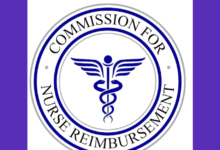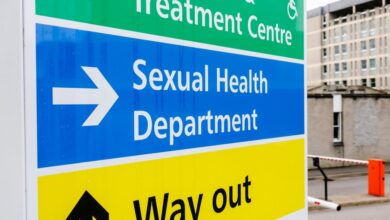Government meets 50k nurse target but vacancies remain high

The government has reached its target of 50,000 additional registered nurses in England, but vacancies have barely reduced and some specialties have seen staff numbers decrease.
Nurse leaders have warned that staff are spread “perilously thin” across NHS services, citing figures released today which show there are still more than 42,000 registered nurse vacancies.
“This political target had no basis in the reality of demands on health care”
Nicola Ranger
The Department of Health and Social Care announced today that it had met its manifesto pledge early, having initially set a deadline of March 2024.
Provisional data published today by NHS Digital showed that there were 51,245 additional nurses working in the NHS in England in September – increasing from 300,904 in 2019 to 352,149 now. This includes nurses working in general practice.
The government said the commitment had been achieved by boosting education routes into the profession, international recruitment and actions to improve retention of the existing workforce.
Breaking down the settings in which these nurses work, adult nursing saw the greatest increase (22%) in numbers between September 2019 and 2023 – from 185,557 to 225,935 full-time equivalent (FTE) staff.
Children’s nursing saw the second biggest increase over the same period, from 23,294 to 26,019 FTE staff – up 12%
Meanwhile, community and mental health nursing both had an 11% increase in staff numbers between 2019 and 2023.
However, not all nursing specialties reaped the benefits from the influx of new joiners.
GP settings only saw a 1% increase in numbers between September 2019 and 2023 – from 166,352 FTE staff to 16,713.
Meanwhile, NHS heath visiting services actually saw their workforce decline over the period from 6,981 FTE staff to 5,579 – a 20% drop.
Learning disability nursing had a 5% decline in FTE staff – from 3,171 to 2,998.
The commitment for more nurses came from the government’s 2019 election manifesto, in which it pledged to increase the FTE number of registered nurses working in the NHS by 50,000 by March 2024.
While today’s data shows that the government has met the commitment earlier than planned, nurse leaders have warned that vacancy rates remain incredibly high, suggesting demand is far outstripping supply.
It comes as separate data published today by NHS Digital showed that there are 42,306 FTE vacancies within the registered nursing staff group.
Although this represents a 9% decline in vacancies compared to the same period the previous year, it is only a 2.6% decline in vacancies since 2019.

Victoria Atkins
Despite this, ministers have said the figures today represent the largest ever sustained growth in the NHS nursing workforce.
Health and social care secretary Victoria Atkins said: “There are 50,000 extra nurses in the NHS caring for our loved ones, delivering extra appointments and improving access for patients.
“We have delivered on our promise but we won’t stop here.”
Ms Atkins said that the NHS Long Term Workforce Plan, published earlier this year, would help to retain the current workforce, reform clinical practice and increase the number of nurse training places by 2031.
She added that any additional nurses would help cut waiting lists – one of the government’s five priorities – and give patients “the care they need, when they need it”.
Responding to the announcement, the Royal College of Nursing chief nurse, Professor Nicola Ranger, said: “Nursing staff will reject government claims that it is ‘mission accomplished’ on nurse recruitment – this political target had no basis in the reality of demands on health care.
“There are still tens of thousands of nursing vacancies in the NHS.”

Nicola Ranger
Professor Ranger warned that, on every shift, nursing staff were “caring for too many patients”.
“They’re spread perilously thin leaving patients waiting longer, and unable to provide the outstanding care that they want to,” she said.
Professor Ranger added: “The ambitious workforce plan will remain a pipedream without proper investment and critical detail on how it will be achieved.
“Nursing staff won’t tolerate a status quo of low pay and endlessly increasing demands.”
Also responding to the announcement, the chief executive of the Institute of Health Visiting, Alison Morton, said: “It is shocking to see the number of health visitors in England continuing to fall, month on month.”
Based on the most recently published data on the number of health visitors working in NHS and non-NHS settings, there are now 48% fewer health visitors than in 2015, noted Ms Morton.
She said: “We cannot lose sight of the devastating impact that these cuts are having on the babies, young children and families that health visitors support.
“As a result, health visitors are being stretched more and more thinly, with less time available to support families.
“These cuts are a false economy as the impacts are being felt across the health, education and care system – they strip out health visitors’ ability to prevent, identify and treat problems before they reach crisis point and require more costly late intervention.”







